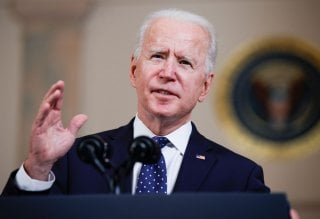Joe Biden's New Problem: What Happens When the Stimulus Money Dries Up?
The three rounds of direct federal stimulus payments, along with other government relief measures such as expanded unemployment benefits, have been a major factor in generating an economic recovery in the United States.
The positive economic impacts of the federal government’s distribution of third-round direct stimulus payments, as called for in the American Rescue Plan, have been substantial. The IRS has now sent nine separate batches of stimulus payments to eligible Americans, with over 165 million payments with a total value of over $388 billion.
The three rounds of direct federal stimulus payments, along with other government relief measures such as expanded unemployment benefits, have been a major factor in generating an economic recovery in the United States. The third-round of payments, in particular, has resulted in a significant boost to economic activity in the country. These payments were larger than either of the two previous payments, and their distribution coincided with both greater rates of vaccination as well as the reopening of many businesses across the country. This helped to boost both consumer spending and household income.
But for many Americans, the gains were short-lived. A recent Bankrate survey found that almost 61 percent of respondents believed that their stimulus payments would not support their financial well-being for more than three months. Of that number, 21 percent reported that their payments would not even last them a full month, while an additional 14 percent indicated that the payments did little or nothing to meaningfully impact their financial situations.
Indeed, it appears that the positive impacts of the third-round of stimulus payments may be starting to slow. The IRS is nearing the end of its distribution of the payments, focusing its efforts now on sending payments primarily to those people whose eligibility was dependent on the processing of their 2020 tax returns.
In addition, retail sales data may also be pointing to a reduction in the impact of stimulus payments. In March, retail sales in the U.S. jumped by close to 10 percent, a figure that greatly exceeded many estimates. April, however, saw retail sales numbers flatten out.
It is likely that different industries will be impacted differently by continued economic revival and the influence of stimulus payments. The car rental industry, for example, is finding that demand is beginning to outstrip supply as more Americans look to take summer trips; this comes after most major car rental companies were forced to sell off much of their inventory during the height of the pandemic. The result is a hike in car rental prices.
DoorDash, a food service delivery, reported in a letter to shareholders that the distribution of stimulus payments resulted in a significant boost in demand for food deliveries. At the same time, the company reported that stimulus payments contributed to a shortage of drivers, many of whom drive for DoorDash as a means to earn supplemental income. With the impact of stimulus payments starting to diminish, a reversal of those trends could be on the way.
Eli Fuhrman is a contributing writer for The National Interest.

